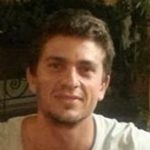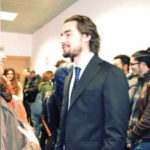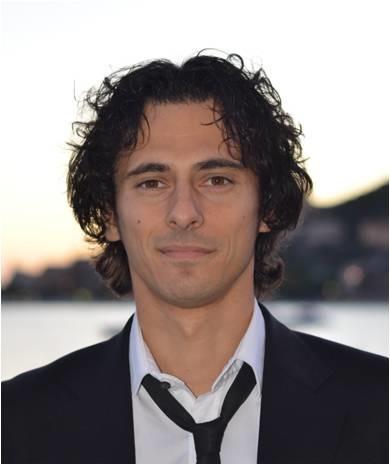Coordinatore

Andrea Cafarelli
Post-Doc
Andrea Cafarelli is a post-doctoral fellow at The BioRobotics Institute. In 2013 he received the Master degree (cum laude) in Biomedical Engineering from University of Pisa and in 2017 he obtained a PhD (cum laude) in Biorobotics at Scuola Superiore Sant’Anna, defending a thesis entitled “Controlled ultrasound exposure for innovative therapeutic applications”. His research activity is mainly focused on the development of ultrasound-based systems for therapeutic purposes (i.e. high intensity ultrasound for cancer treatment and low intensity pulsed ultrasound from mediated drug delivery and regenerative medicine).From 2019 is also co-founder of River Global Scientific Lab srl, a spin-off company of Scuola Superiore Sant’Anna dedicated to technological advances in the therapeutic ultrasound field.
Link al CV

Francesco Fontana
PhD student
Francesco Fontana is a Ph.D. student in Biorobotics at The BioRobotics Institute of Scuola Superiore Sant’Anna. In 2017 he received the Master degree in Chemical Engineering at University of Salerno, with a thesis entitled “Configuration of a plant for supercritical CO2 – assisted electrospinning”. His research activity regards the development of an in vitro highly controlled combined stimulation system (low intensity ultrasounds plus electromagnetic pulses) of relevant cell lines for modelling neuropathies (in particular the Guillain-Barrè syndrome). The aim is to bring anti-inflammatory and regenerative effects. The second topic concerns the development and characterization of engineered nanocomposite hydrogels for cartilage regeneration.Link al CV


Leonardo Ricotti
Scientific coordinator
Leonardo Ricotti is Associate Professor of Bioengineering and Biorobotics at SSSA and head of the “Micro-nano-bio systems and targeted therapies” Lab at the BioRobotics Institute. He holds a M.Sc. course on “Miniaturized therapeutic and regenerative technologies” and a PhD course on “Micro-nano-bio systems for medical and technological applications”. He has supervised or co-supervised 10 PhD students, working on therapeutic micro-devices, biomaterials and artificial organs, and 30 M.Sc. theses on bioengineering topics. He carries out innovative research efforts at the interface between different disciplines, such as robotics and mechatronics, materials science, molecular biology and biotechnology and he aims at creating innovative (and potentially disruptive) “match points” between different disciplines. He is co-author of ~90 scientific publications (60 on ISI journals), 6 book chapters on micro-nano systems for biomedical applications. He is also inventor of 9 patents. He is Associate Editor of the IEEE Transactions on NanoBioscience and of the IEEE Transactions on Medical Robotics and Bionics. In 2012, he received the “Massimo Grattarola” award for the best PhD Thesis in bioengineering (Thesis title: “Development of bio-hybrid actuators”). In July 2014, he was awarded with the European Biomaterials and Tissue Engineering Doctoral Award. In 2018, he received regional and national prizes as member of the spin-off company Relief s.r.l. He currently coordinates an European project (ADMAIORA – ADvanced nanocomposite MAterIals fOr in situ treatment and ultRAsound-mediated management of osteoarthritis), funded in the H2020 framework.Link al CV
ULTRASOUND TECHNOLOGIES FOR TISSUE MATURATION
D4.1 Selected components for the innovative LIPUS stimulation set-ups
In this Deliverable, a complete description of the components selected for building the highly
controlled in vitro LIPUS stimulation systems is provided. These systems will be used in the
project to identify the optimal therapeutic US stimulation conditions and to study the
underlying effects before the in vivo translation. Two different LIPUS setups were designed.
The first one (SYSTEM 1) will ensure control of the US dose at the target for identifying (offline) the optimum US parameters able to trigger beneficial bioeffects in terms of cartilage
regeneration. The second set-up (SYSTEM 2) will also allow to investigate intracellular
phenomena occurring during LIPUS, in real-time.
This document does not pretend to describe the assembled systems and their validation
(expected at later stages of the project), but aims at providing a complete description of all
the selected constituent parts.
One of the ADMAIORA goals is to enable the use of several LIPUS transducers within ad hoc
US stimulation setups for a controlled in vitro US cell stimulation.
Two different systems (System 1 and System 2) are under development in the project to
investigate the optimal ultrasound therapeutic conditions and the underlying effects before
the in vivo translation.
In this deliverable, the components selected and that will be integrated in the in vitro setups
are described. Below, the technical datasheets of the high-frequency transducers are
reported.
D4.2 Assembled innovative LIPUS stimulation set-ups
In this Deliverable, the highly controlled in vitro LIPUS stimulation prototypes are described.
In section 2.1, both the low-frequency (38 kHz) and high frequency (500 kHz – 5 MHz)
stimulation set-ups identified as SYSTEM 1 are presented. They will be used for ensuring the
control of the US dose at the target and identifying (off-line) the optimum US parameters
able to trigger beneficial bioeffects in terms of cartilage regeneration. In section 2.2, the
assembled SYSTEM 2 set-up and its components is reported. It will allow investigating
intracellular phenomena occurring during LIPUS stimulation in real-time.
Only few details on the two systems are reported in this Deliverable, which is public, to not
jeopardise possible future IP protection. Full details on the different components have been
reported in Deliverable D4.1. Furthermore, all additional and confidential information on the
two systems is reported in Deliverable 4.3 (which is confidential).
Two different LIPUS setups have been designed, built and assembled:
• SYSTEM 1 for the release of US dose at the target (off-line) in a controlled way with
consequent identification of optimal US parameters able to trigger beneficial bioeffects
in terms of cartilage regeneration. In particular, two different set-ups have been
developed for low frequency and high frequency US stimulation.
• SYSTEM 2, which allows to investigate intracellular phenomena occurring during
LIPUS stimulation, in real-time (on-line).
In this Deliverable, a few pictures of the assembled prototypes are reported. No additional
details have been provided, being a public Deliverable, to not jeopardise possible IP
protection. A detailed description of each system component was already reported in
Deliverable D4.1. All additional and confidential information on the two systems is reported
in Deliverable 4.3 (which is confidential).
